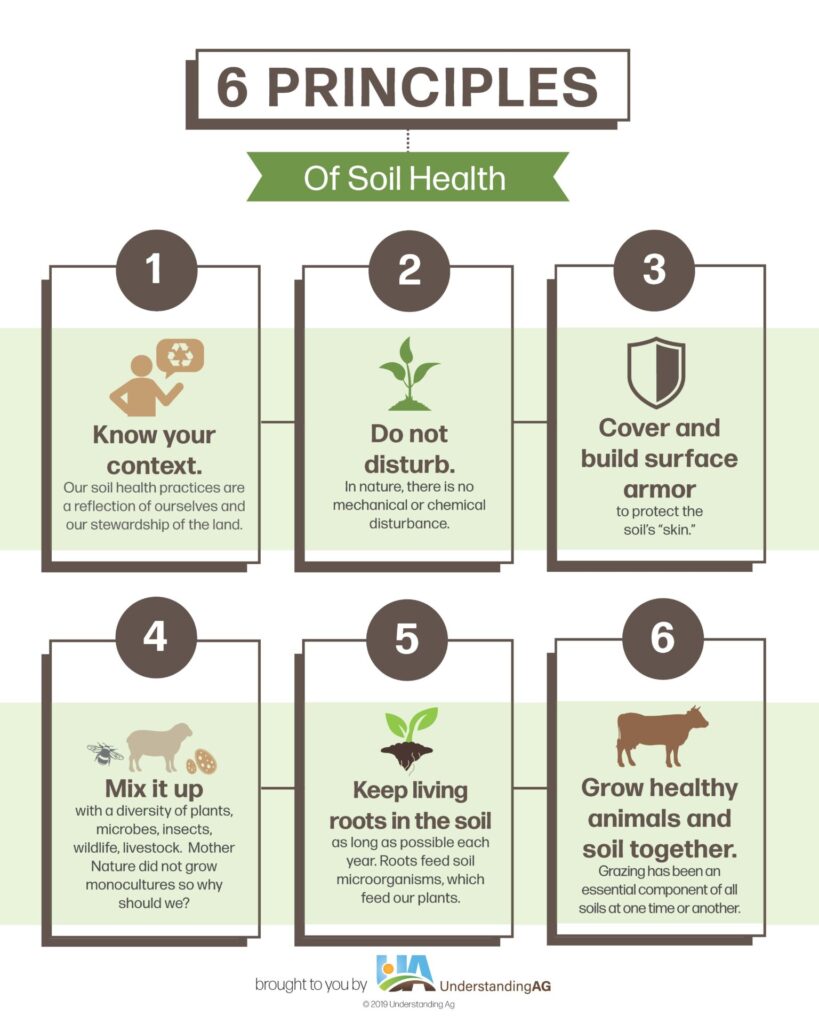
The SRRWD Soil Health Transition Program provides funding for the implementation of soil health-building practices.
“Soil health is defined as the continued capacity of soil to function as a vital living ecosystem that sustains plants, animals, and humans. Healthy soil gives us clean air and water, bountiful crops and forests, productive grazing lands, diverse wildlife, and beautiful landscapes. Soil does all this by performing five essential functions:
- Regulating water – Soil helps control where rain, snowmelt, and irrigation water goes. Water flows over the land or into and through the soil.
- Sustaining plant and animal life – The diversity and productivity of living things depends on soil.
- Filtering and buffering potential pollutants – The minerals and microbes in soil are responsible for filtering, buffering, degrading, immobilizing, and detoxifying organic and inorganic materials, including industrial and municipal by-products and atmospheric deposits.
- Cycling nutrients – Carbon, nitrogen, phosphorus, and many other nutrients are stored, transformed, and cycled in the soil.
- Providing physical stability and support – Soil structure provides a medium for plant roots. Soils also provide support for human structures and protection for archeological treasures.” – nrcs.usda.gov(For more details: www.nrcs.usda.gov/wps/portal/nrcs/main/soils/health/ )
Soil health-building practices provide many benefits such as increasing soil organic matter and water infiltration, reducing nutrient runoff and soil erosion, providing carbon sequestration, and augmenting pollinator habitat. These benefits can be achieved by implementing the 6 principles of soil health

(For more information visit www.understandingag.com)
Examples of projects that would qualify in this program would be planting cover crops, increasing plant diversification and pollinator habitat in pastures, and innovative soil health practices. The SRRWD will cost-share cover crop projects 50-50 up to a maximum of $50 per acre up to a maximum of $5,000 per year for three years. The SRRWD will cost-share pasture management and innovation projects at a 50-50 up to a maximum of $10,000.
Cover Crops 101 – Fact & Planning Tool
Use the Crop Crops 101 – Fact and Planning Tool as a resource guide to help you plan how to incorporate cover crops into your farming operation
-
Soil Health Transition
-
Soil Health Transition
Cover crop is 50-50 cost-share up to a maximum of $50 per acre up to $5,000. Innovation is 50-50 cost-share up to a maximum of $100 per acre up to $10,000.
Cover Crop/ Innovation Application Cover Crop Fact and Planning Tool
-


